
MODULE 4 - ELK HUNTING GEAR
CHAPTER 3: ESSENTIAL GEAR FOR ELK HUNTING

I’ve given you a pretty good glimpse into the gear I carry in my packs while I am out elk hunting. Several of those items I could easily swap out with a budget-friendly option and probably not notice too much of an inconvenience. However, there are a few key pieces of gear that I deem essential. These are items that I’m going to be less likely to compromise on, and items I put more effort into researching and testing beforehand. These are items that are near the top of my prioritized gear list based upon my style and season of hunting. These are the main items I rely on and feel contribute most to my comfort, safety, and efficiency.
CLOTHING
About 10 years ago, I received my first set of “technical” hunting clothes. At the time, I simply considered it another set of camo clothing, and couldn’t believe how much it cost. Fortunately, I had won it at an elk calling contest…otherwise, I’m not sure I would have been able to justify paying for it.
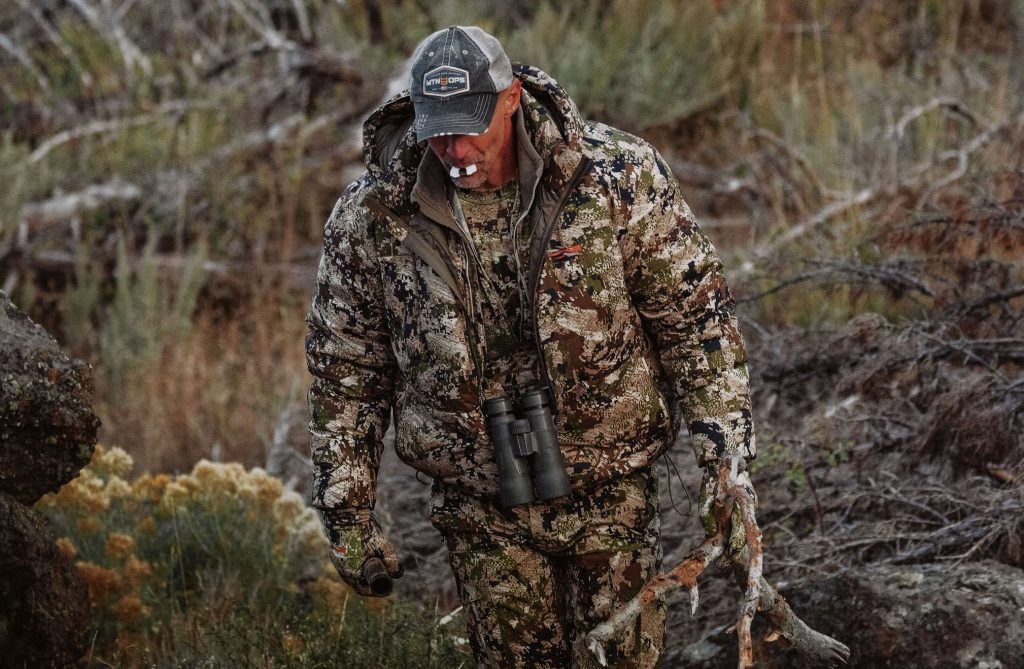
A few weeks later, my hunting partner and I were elk hunting and found ourselves wading through a meadow of waist high grass in an absolute downpour. We were soaked from head to toe. When we finally called it a morning and hit the main pack trail, I knew we needed to get back to the truck and get warmed up ASAP. It took about an hour to get back to the truck, and as we dropped our backpacks, I noticed that I was not only comfortable, but that my pants were completely dried out.
I didn’t mention anything at the time, but four hours later as we were set up waiting for an approaching bull, I looked over and noticed my buddy shivering. I joked that he needed to control his adrenaline, to which he whispered that he had been cold to the bone all day and was still wet from the morning hike. I am usually the one who gets cold easily, and as I looked down at my completely warm and dry pants, I knew there was something different about this gear.
Hunting clothing manufacturers have made some incredible advances in the past 10 years. No longer are cotton and wool the only choices for staying comfortable, dry, and safe. “Layering systems” is now a common term among hunters, and the benefits of these new, technical clothing systems go far beyond looking cool.
The concept of a layering system of clothing is far more than just an effective camo pattern. In fact, camo pattern should be one of the last things you look at when considering camo clothing. A layering system allows a hunter to add or remove individual pieces of clothing to micro-regulate their core body temperature. For elk hunters, this is incredibly beneficial.
Imagine leaving camp hours before daylight on a cold, frosty morning. The temperature is 26 degrees, and you are shivering. Within minutes, you start up the steep mountain, and over the next 3 hours, gain 2000 feet of elevation and hike 4 miles. Daylight is just reaching the high-country basin you are overlooking, and you pull out your spotting scope to have a close look. You end up behind the optics for an hour, picking apart the open hillsides across the drainage.
During this time, the brisk mountain winds relentlessly attack your position. Finally, you spot the bull you want to go after, and following another 2000 foot elevation drop and gain, you are within shooting distance of the bull. By this time, the morning sun has burned off the frost, and the temps are rising rapidly into the mid-50’s. You shoot the bull and get started on field processing, as the sun reaches its peak. The temps have climbed up into the 70’s, as you hike the first load of elk meat off the mountain. Exhausted, and sweating profusely, you head back up the mountain to get the last load. You reach the elk just as the sun drops behind the horizon, and the temperature starts to drop rapidly. An evening rain storm makes its way over the far ridge and starts dropping a cool, light rain on you. As you make your way down the slippery, wet mountainside, you have to stop several times to rest. When you finally reach the bottom just before midnight, the temperatures are in the mid-30’s, and the evening rain has turned into a light snow.

This is not an unrealistic example of a day of elk hunting. You can experience brisk cold, work up a sweat while hiking, then stop to glass or set up on a bugling bull. Your climate has gone from dry and cold, to hot and sweaty, back to cold and sweaty. And that’s just in the first few hours of the day. A good, technical layering system will do several things to help you maintain a more consistent core temperature and stay comfortable and safe in a wide-range of conditions.
Technical clothing will wick sweat from your skin to the outside of your system where the moisture can be evaporated. It will provide a layer of insulation that can be quickly removed or added, depending on your immediate needs. And it will provide an outer layer of protection against thunderstorms and passing showers. In the situation I described above, a layering system of clothing will bridge the gaps that would otherwise exist as you go throughout a normal day of elk hunting. And we didn’t even get into what might happen if you got stuck out on the mountain in those conditions that night! Technical clothing can keep you dry and warm. This allows you to hunt more comfortably and stay on the mountain longer in inclement weather. It can also increase your safety when things go bad.
I have hunted elk in every weather condition possible, and I don’t often spend much time at camp. Technical clothing has enabled me to extend my comfort and time on the mountain, therefore extending my chances of success. If I were riding an ATV on old logging roads looking for elk during rifle season, technical clothing might not be near the top of my prioritized gear list. However, for hunting fast and light – especially in the backcountry – it’s definitely near the top of my list. Coupled with an effective camo pattern and quiet material, I honestly believe the advancements in technical layering systems for hunting improves my comfort, safety, and efficiency as an elk hunter.
PACKS
I spent a bit of time previously talking about packs – both my reliance on good packs as well as my excitement to find a single pack that I could use as a daypack, bivy pack, and meat hauler. Aside from my weapon, my pack is the next most important thing to remember when I head out hunting each day. It holds the necessities of the day – food, water, license, safety gear, tools for success, etc. If I am hunting out of my pack (i.e., bivy hunting), it becomes even more essential. Lastly, when I kill an elk and need a way to transport the meat off the mountain, I rely on my pack.
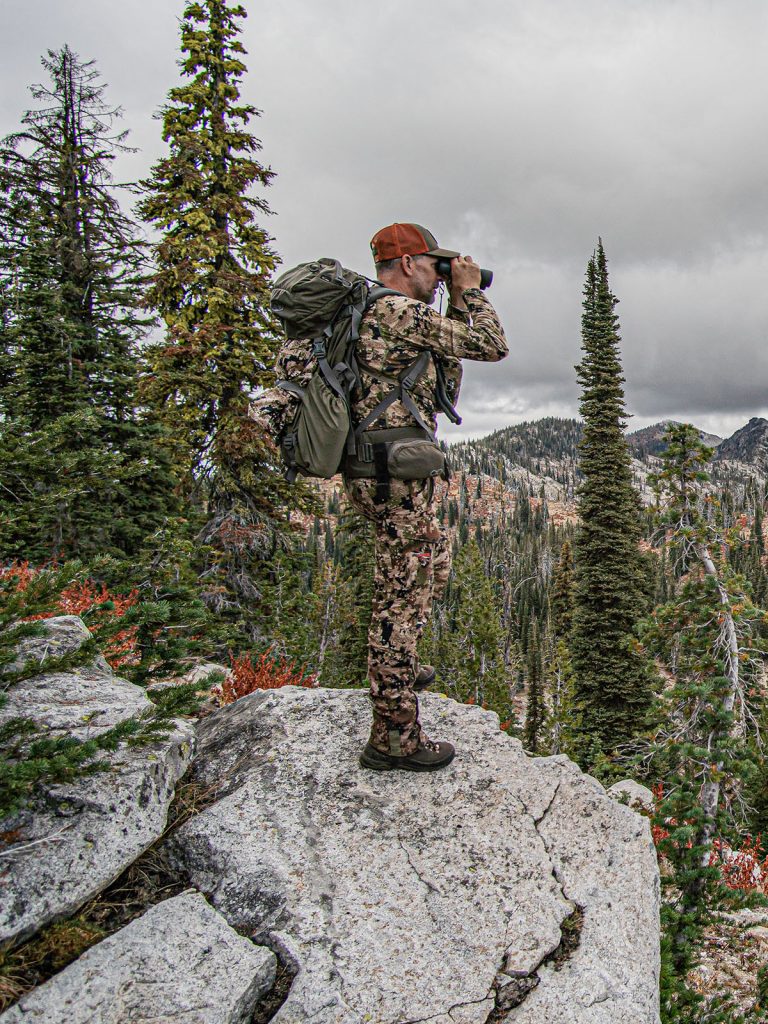
My backpack is on my back just about every minute of an elk hunt. It needs to be functional, as well as comfortable, for each of the situations I plan to use it in. Finding one pack that meets those requirements is extremely difficult. Not too long ago, I owned three separate packs that I could use for three different situations (day hunts, bivy hunts, and packing meat). And that’s not a bad route to go. You get a very specialized pack for each use and can dial in the function and comfort of each one for each situation.
DAYPACKS
If you are looking for a day pack, you will want something that can carry your essential day hunting gear. Your loads will be lighter, but having the ability to carry out a minimal load of meat on your first trip can be beneficial and save miles of packing. I prefer a pack that is at least 1500-2000 ci for a daypack. This allows me to easily fit all the gear I need for day hunts, as well as room to stuff my vest or jacket as I adjust layers throughout the day. I also prefer a day pack with some kind of a rigid frame stay to assist when I need to pack out a first load of meat. These packs aren’t usually designed to haul heavy loads, but a frame stay will provide more stability and rigidity on the occasions when you need to use it to do so. I also prefer a good assortment of pockets for storage and organization. Lastly, I want it to be fairly streamlined so I can wear it as I shoot my bow and be able to hike hard and fast without worrying about it getting caught up in thick brush or feeling bulky.
BIVY PACKS
For bivy packs, I need all the functionality of a day pack, with the addition of more capacity for my camping gear and the ability to carry heavier loads. Most bivy packs are designed to haul 40-50 pounds of gear, but usually fall a little short when it comes to hauling 100+ pounds of elk meat. Again, they can be used to haul a lot of meat, but comfort is often sacrificed in a big way. I prefer a bivy pack that is 3000-4000 ci, depending on the configuration. This is plenty of capacity for 4-5 days’ worth of gear, yet still keeps the empty weight of the pack fairly low. If you’re going to be staying out longer than 4-5 days, you might need a little more capcity.
FREIGHTER PACKS
Lastly, when it comes to a meat hauler, I love a rigid external framed freighter pack. These packs often have thicker padding on the shoulder straps and waist belts, and allow an elk hunter to carry the maximum weight. The downside is that they usually have a wider frame for more stability and they don’t usually have many pockets for storage, etc. They work great for retrieving from your truck as you hike back in to carry out the remainder of your elk meat, but not so much for actually wearing while you hunt.
The combination of these three packs has enabled me to wear a pack that is specialized for each phase of my hunt. However, when it is necessary to utilize one of these packs for a function it isn’t intended to be used for, comfort and function are compromised rather quickly and noticeably.
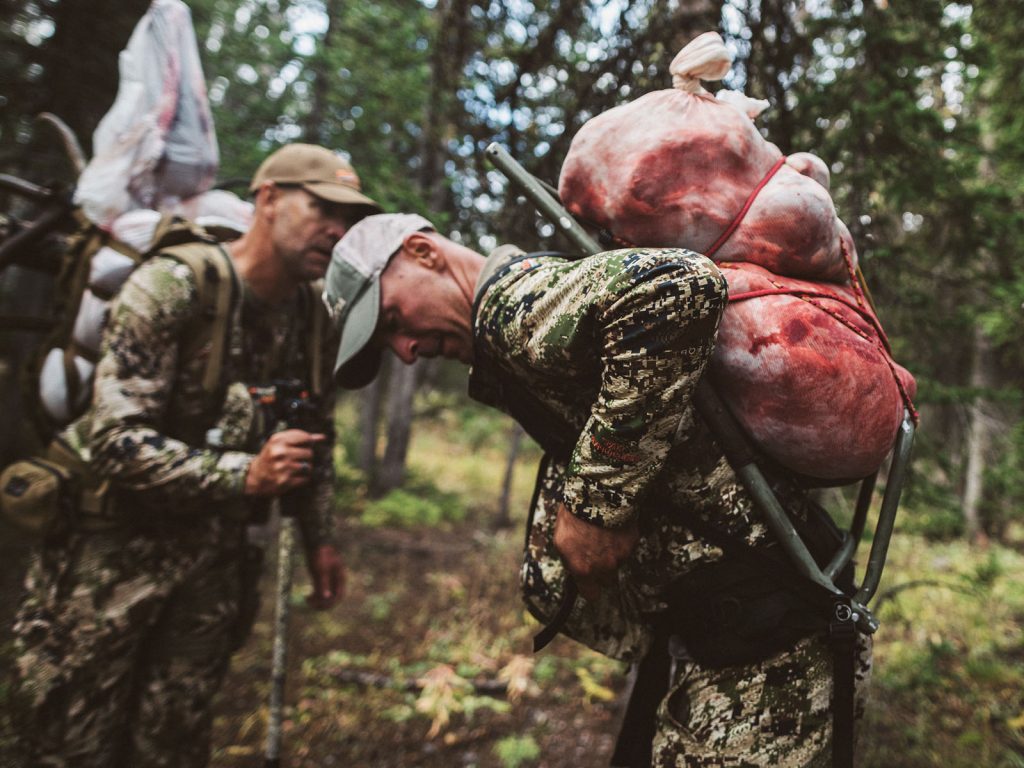
Several pack manufacturers have been working for several years to come up with a good blend of function in their packs, and I feel that in the last several years, there are finally some very viable options for cross-performing packs. While these packs might be slightly larger or heavier than what I would ideally need for a daypack, and while they might not carry 100+ pounds quite as well as a freighter pack, they do bridge the gap nicely and allow me to do more with a single pack than I’ve ever felt comfortable doing before.
As with all hunting gear, you need to determine what style of pack(s) is going to be best for your style of hunting. If you don’t ever plan on bivy hunting, a good day pack and a freighter pack would be a great combination, and likely not cost as much as a higher quality cross-performing pack. For my style of hunting, the newer cross-over packs are just what I’ve been waiting many years for, and I’m excited to be able to day hunt, bivy hunt, and haul meat – comfortably – with just one pack.
HUNTING BOOTS
If there is one area of gear that I feel is more individualistic than any other, it would have to be boots. I have weird feet. I have struggled for years to find a high quality, waterproof boot that actually fits my feet. I’ve worn less expensive boots that fit great, but they either leak water or aren’t very supportive on a steep mountain. In fact, those boots have been my go-to boot for several years as I’ve tried high-quality boot after high-quality boot trying to find the right fit. Unfortunately, after 6-8 pairs of high-quality boots that provided excellent support and were truly waterproof, I was always left disappointed by the fit.
For many years, I worked through sore feet and blister after blister, always resorting back to my cheap standbys that left quite a bit to be desired. But, they were comfortable. During these years, I talked to multiple other hunters, as well as foot and boot experts, and tried their recommendations. Finally, after 5-6 pairs of “trial” boots, I am happy to say that I have found one pair of boots that is supportive, 100% waterproof, lightweight, AND COMFORTABLE!
What I hope to illustrate in this section is that you need to find a boot that works for you. Every foot is different, so the boot that fits me might give you terrible blisters. That isn’t necessarily a function of poor design or low quality, but more a matter of individual fit. Unfortunately, you can’t easily go out and break in a boot, and then return it when you realize it isn’t going to work out. For those of you who are able to fit comfortably into several different boots, I’m incredibly envious! It’s so important to take good care of your feet in elk country, so finding a lightweight, supportive, waterproof, and comfortable boot is up near the top of my prioritized gear list.
YOUR WEAPON
If you are elk hunting with a tag in your pocket, your weapon is vital. Let me restate that: Confidence in your weapon is vital. Whether you are hunting with a bow, muzzleloader, or rifle – or a spear for that matter! – you need to know you can rely on your weapon to do its part. And that confidence comes from you doing your part long before you rely on your weapon to do its part.
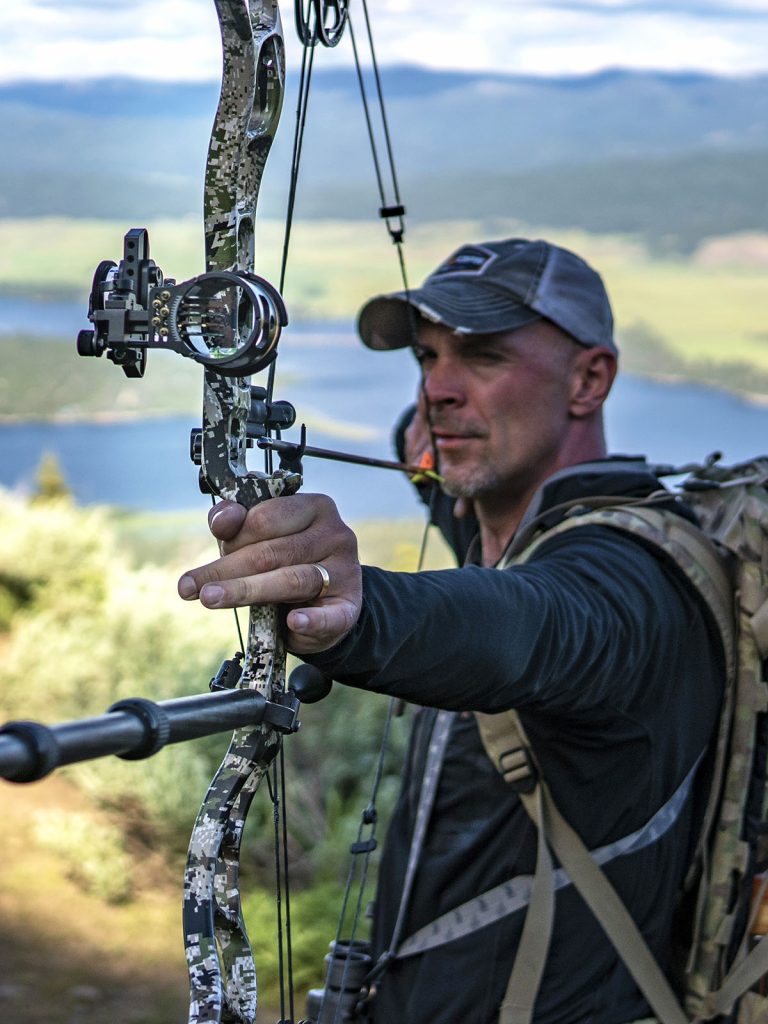
For archery hunters, starting out with equipment that is fitted for you is important. A bow with a draw length that is too long or too short can cause bad habits to be immediately ingrained into your form. Shooting an arrow/broadhead combination that isn’t tuned for your bow can be an exercise in frustration as you try in vain to get your arrows to hit consistently. These critical setup issues – and many more – are necessary steps to increase your confidence in your bow before you even begin shooting.
Once you begin shooting, it’s important to practice for your hunt. Repetitive shooting is great to establish muscle memory and improve your form, but you should also create opportunities to shoot with your heartrate elevated, from random distances (not just 20, 30, 40, etc.), and from longer distances. These practice tips will increase your confidence, as well as help you identify where your limitations are. Personally, I love attending 3D archery shoots throughout the spring and summer months to help me prepare and gain confidence in my equipment, as well as my abilities to properly use my equipment to the best of its abilities.
For gun hunters, the same philosophy holds true. If you want confidence, you have to gain it – i.e., earn it. The more time you spend shooting your gun in hunting-like conditions, the more sure of its performance you will become. At the bare minimum, knowing the bullet drop at different distances that you might encounter, and how to compensate for those drops, is crucial.
Regardless of what weapon you choose to hunt elk with, you need to be confident in it and in your own ability to use it. Trust me, it can be overwhelmingly frustrating to spend all year getting into great shape, scouting, practicing your calling, etc., only to miss a chip shot because of a lack of practice with your weapon.
SHELTERS/SLEEP SYSTEMS
Depending on your style of hunting, this one may or may not end up on your list of essential items. However, I get cold at night very easily, so tents, sleeping bags, and sleeping pads are definitely on my list!
A good night’s rest is imperative for waking up refreshed and ready for another grueling day of elk hunting. And your quality of sleep is going to begin and end each night with your sleep system. If you are bivy hunting, your sleep system will also be a major factor in how much weight and bulk you are lugging up and down the mountain, so it can be important to consider your options.
If I am staying at a base camp, items like cots, comfy pads, heavy (i.e, warm) sleeping bags, and bombproof tents are easy to pack and set up. If I’m carrying camp on my back, many of those items need to change. I want something lighter and less bulky, which often means I will have to compromise on comfort – or spend extra to get both.
The later in the season you hunt, the more attention you will need to put into your sleep system. Cold, wet weather can make for long nights on the mountain, and you need to be prepared for drastic swings in temperatures and conditions.
There is a ton of information available out there on 3-season vs. 4-season tents, tents versus bivy sacks, bivy sacks versus tarps, etc. Do your research, and find the shelter that fits your needs, and your budget. I personally prefer a tent as it gives me a “home” where I can store my pack, weapon, boots, etc., and be protected from the elements without becoming claustrophobic (a drawback for me and bivy sacks).
When it comes to sleeping pads, they are not all created equal. A cheap, inflatable pad that springs a leak in the backcountry becomes wasted space and weight, and can cause for long, uncomfortable nights spent rolling back and forth on the hard ground. Your sleeping pad will also play a large roll in insulating you from the cold ground, so again, do your research based upon your needs, and your budget.
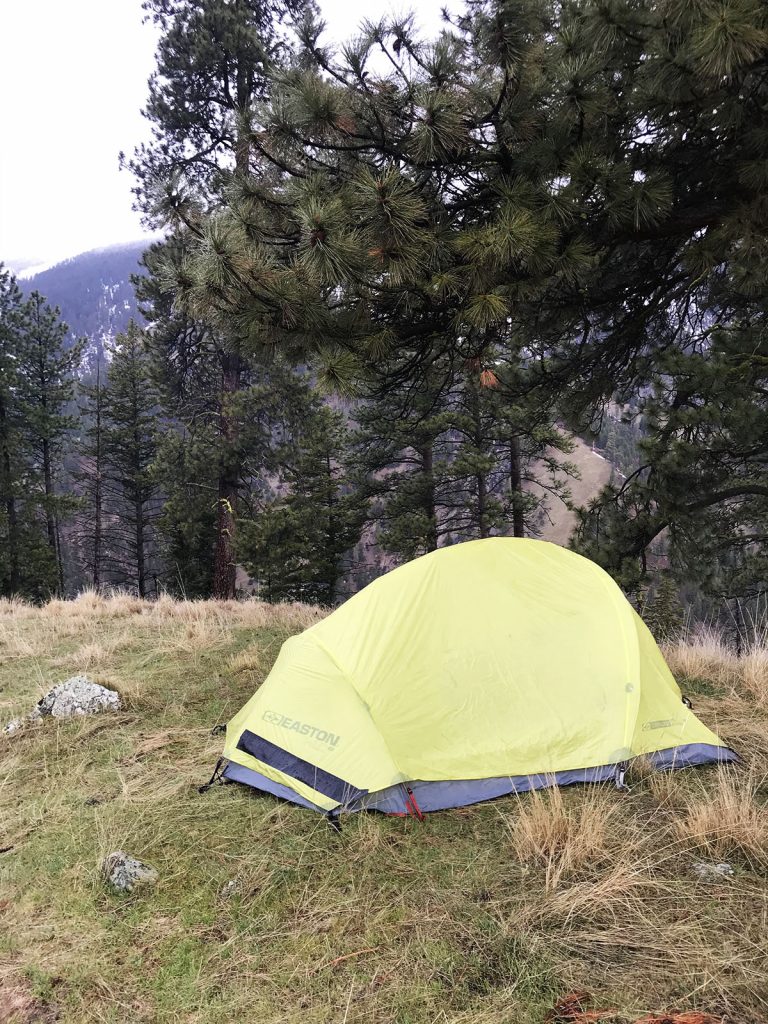
Lastly, your sleeping bag is ultimately what is going to keep you warm at night. Don’t just rely on the manufacturer’s temperature ratings. For me, if the temps get below 40 degrees, I need a zero-degree sleeping bag. I sleep really cold, so I have to be a little better prepared for cold weather than others might need to be. At a base camp, that’s easy. When I’m bivy hunting, however, packing an extra blanket with me is not an option. I have learned that a small, light puffy vest or jacket adds a lot of insulating value and doesn’t add much bulk or weight to my pack. Adding this extra piece of clothing as a supplement to my sleep system has allowed me to be more versatile in my sleep system, and not worry quite as much about getting cold at night.
Again, like all elk hunting gear, your sleep system is going to be personalized based upon your style, your needs, and your budget.
OFTEN OVERLOOKED GEAR
In addition to the essential gear I spoke of, there are a handful of other items I feel might be helpful to mention. These are items of gear that are sometimes overlooked or discounted in importance, but that I feel can make a big difference in hunting elk. Some contribute more to comfort or safety, while others contribute more to success.
WATER PURIFICATION
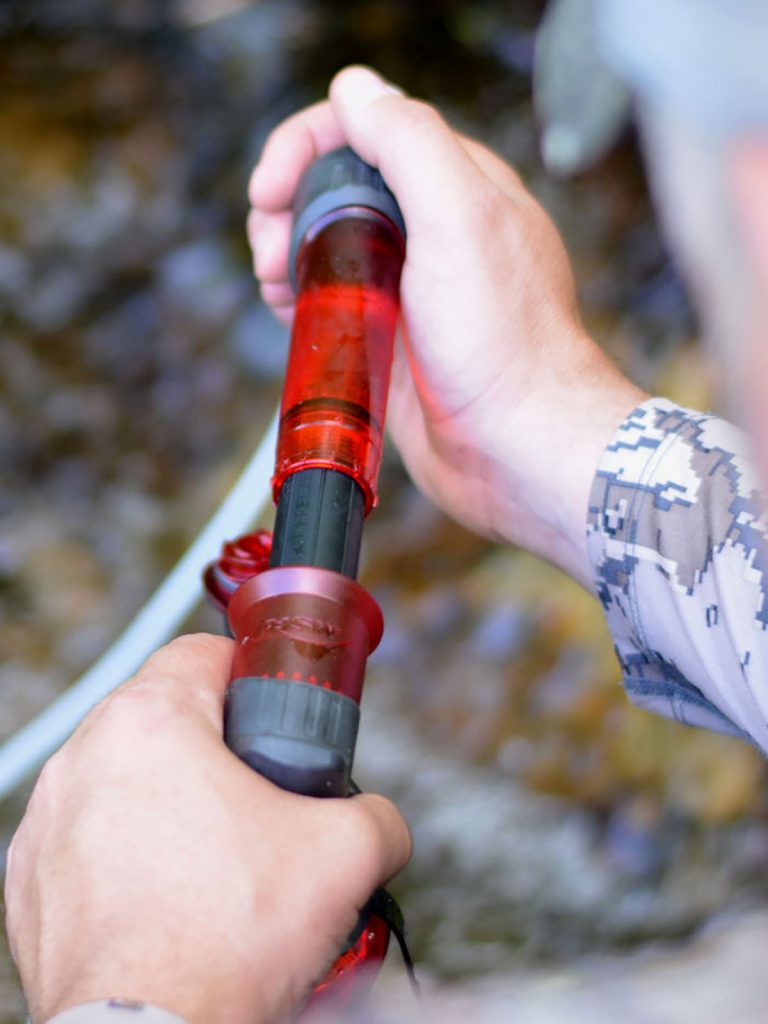
Water is important to elk. But it’s even more important to elk hunters. Hiking for miles every day in steep, difficult terrain can rapidly deplete a body of crucial hydration. After just a couple days of this, your body will begin to shut down. Muscle cramps, fatigue, and exhaustion are magnified if you aren’t getting enough water. It can be difficult sometimes to carry enough water in your pack to stay properly hydrated. Fortunately, in most areas you can find sources of water to supplement what you are carrying. Having a system for purifying the water you scavenge will drastically reduce or eliminate your chances of catching a nasty bacteria from these water sources.
There are several options when it comes to water purification: tablets, gravity filters, pump filters, ultraviolet light, etc. Again, your hunting style and needs are going to dictate which type of purification will fit best in your pack. Having something to purify or filter water, even just as a backup, is very important.
GPS
Until just recently, I had never used a GPS unit. Everyone else had one it seemed, but I didn’t see the point. I never got lost, and they would just be extra weight to carry around in the bottom of my backpack.
I hunted with a good friend in Colorado several years back though, and he had one. After the first morning, I spent more time asking him to look at his GPS to find a water source or a north-facing slope than I did using my elk calls….and that’s saying a lot! I came home from that elk hunt and bought a GPS of my own. I have been amazed every season since then that I had gone so long without one.
Since that experience, and after using an official GPS unit for a few years, I found the Hunt App from OnXMaps, and no longer have a need for an official GPS unit. I talked a lot about OnX and their Hunt App in the Module on Scouting, but using that system has allowed me to completely forgo using a GPS unit, and have even more power and features than before.
I have never had to use a GPS to find my way out of the woods, but it has saved me miles of hiking by enabling me to see connecting trail systems and terrain. I have since learned that navigation doesn’t simply mean finding your way back. It means having a clear picture of where you are going and helping you find what you are looking for. Being able to mark exact locations in the dark so you can return in the daylight without spending valuable time searching goes beyond just being handy.
TREKKING POLES
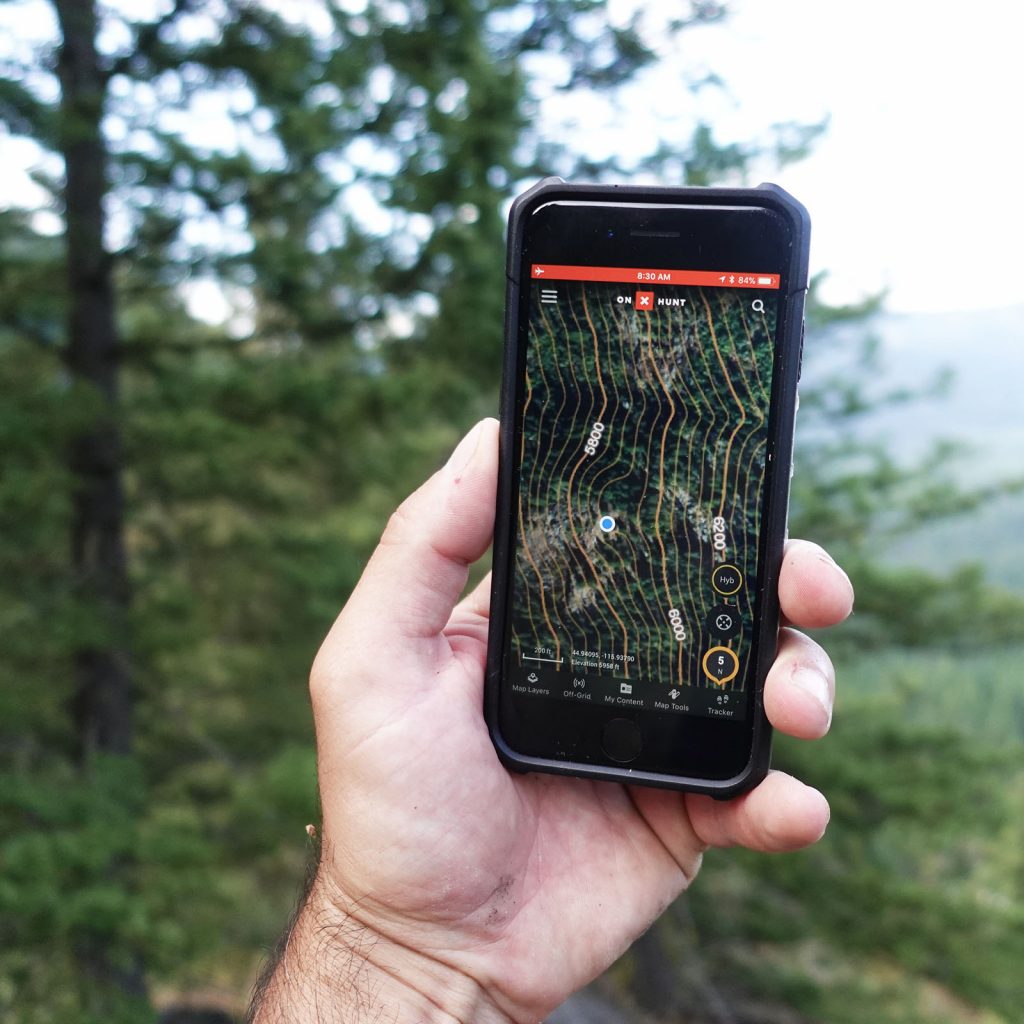
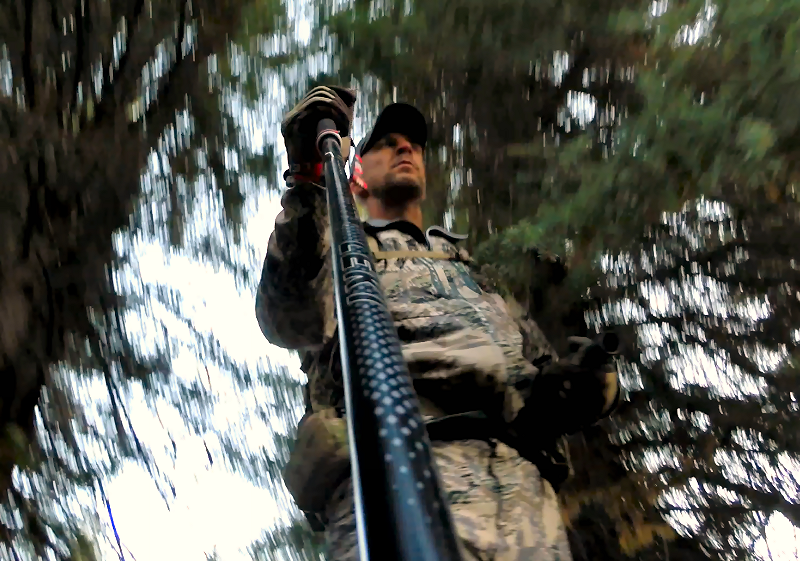
Yuppy sticks. That’s what I always called them. It seemed the non-hunting backpacking crowd used them, but I never saw much benefit for elk hunting. Again, just another weight-adder that wouldn’t ever find their way out of my pack. I am tough, I have good knees and ankles, and I am in good shape. Why would I ever need them? Well, after using them one time, I found that those are the exact reasons why I would need them!
Trekking poles are not necessary, but man, they sure are handy. They rode around in my pack for 5 days before I needed them. Then, after killing a bull and loading a brutally heavy pack onto my back, I decided to use them. After that trip, I rarely step into the woods without my trekking poles readily accessible – and often, strapped around my wrists.
Trekking poles help in keeping your balance, something that is critical when you are carrying a heavy load. They take some of the shock and weight off your knees as you use them to navigate steep terrain, especially as you descend off the mountain. For going up, they allow you to use the strength in your arms and shoulders to pull you up the mountain, reducing the output needed from your legs. Again, they are in no way necessary for elk hunting, but they have absolutely made a difference in my hunting.
WINDCHECKER
I debated putting this in the essential gear list, but it probably deserves to be here. If you are hunting elk, you are constantly trying to avoid detection by their noses. A small bottle of “windchecker” is lightweight and takes up no noticeable room in your pocket, but it can be worth far more than its weight in gold. If my GPS isn’t in my hands, my windchecker usually is. At the very least, it is always readily accessible, and I use it every single time I make a move toward an elk. I honestly would never consider going elk hunting without a bottle of windchecker powder.
SUMMARY
While you may not consider gear to be a vital part of your overall elk hunting success, there is no doubt that the right gear can increase your comfort and efficiency, and those factors can definitely contribute to your success. Again, the key isn’t to get sucked in by hype or marketing, but to evaluate what features are going to be important for you – and your budget – and then shop accordingly.
There is one additional piece of physical elk hunting gear that I place a great deal of value on that I didn’t mention in this Module. Again, your own personal style and method of hunting is going to determine what items are of most importance to you. For me and my hunting style, there is one item that is at the top of the essential items on my prioritized list, which is why it gets its own Module: Elk Calls.
Click ‘Next Module’ Below to Continue to Module 5: Using Elk Calls




